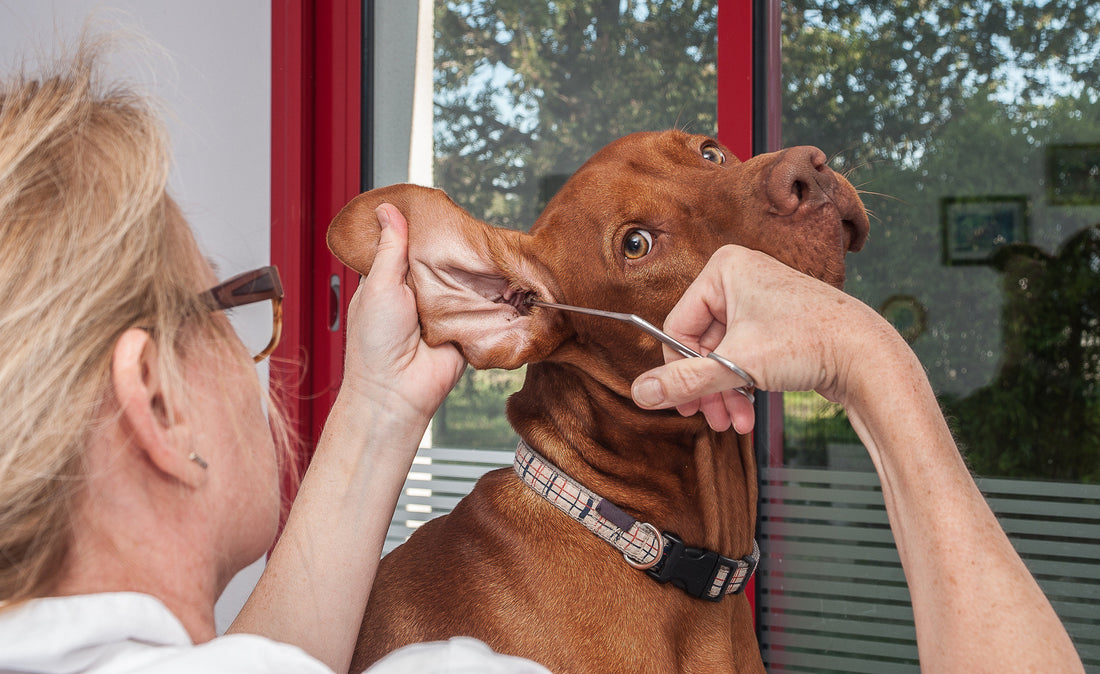
The Most Common Kinds of Cancer in Dogs
Share

Your dog is more than just a fuzzy companion.
He's or she is a part of your family.
Like clockwork, your dog is there to greet you at the door every day with a smile and a tail wag, and expects nothing from you.
But as dogs age, the risk of cancer rises as well.
In dogs older than 10, 50 percent will develop cancer.
Breeds such as Rottweilers, Golden Retrievers, and Boxers are more prone to cancer, so make veterinary visits a routine part of your pet's life.
Below are the most common types of cancer in dogs.
Lymphoma
Lymphoma is the most common cancer in dogs, representing about 20 percent of all cases.
Just like in humans, this is a cancer in the blood caused by a white blood cell called a lymphocyte.
Because there are many different forms of this cancer, depending on where it's located, signs your dog may have lymphoma are varied. However, symptoms such as swollen lymph nodes, abdominal pain, vomiting or diarrhea need to be examined by a vet right away.
Treatment: The plan for lymphoma varies depending on the type of cancer, but it is very successful.
Usually dogs get treatment every one to two weeks, and with chemotherapy, a dog can expect to live 1-2 years or longer.
A steroid called prednisone can also be used to shrink the tumors, and many patients see quick success with this drug.
Mast Cell Tumors
Mast cells are immune cells triggered by allergies.
Because they are found throughout the body, mast cell tumors can develop anywhere.
Most commonly, mast cell tumors are found on the skin and can be identified as a swollen bump.
Your veterinarian will examine and biopsy your dog's tumor and assign it a grade — the lower the grade of the tumor, the less aggressive it is and the less intensive treatment your dog will need.
Also, the cells contain histamine and serotonin, which can cause symptoms such as vomiting, diarrhea and not eating. Your veterinarian may prescribe an antihistamine to help relieve these symptoms.
Treatment: Treatment for mast cell tumor cancer in dogs depends on the grade. Low-grade tumors may just require surgery to remove them, while a high-grade (aggressive) tumor could require surgery, chemotherapy and also radiation.
Osteosarcoma
Also known as bone cancer, Osteosarcoma is often diagnosed in the limbs of large dogs.
Because this type of cancer in dogs is painful, amputation is sometimes necessary to get rid of the cancer and stop the pain.
These tumors are known to be highly aggressive and spread quickly.
Treatment: Once Osteosarcoma is diagnosed, your veterinarian may suggest amputating the affected leg followed by chemotherapy.
Survival rates can range anywhere from 4-6 months or as long as a year with additional chemotherapy treatments.
Lipoma
Also known as "fatty tumors," a lipoma is a benign tumor beneath the skin made up of excess fat tissue.
They can grow anywhere on the body, including the legs, chest, feet or even the face.
Depending on the location of the lipoma and if it will interfere with your dog's mobility, your veterinarian will decide if surgery is necessary to remove the lipoma or leave it be.
There are times when lipomas can grow to be malignant. If this occurs, your veterinarian may recommend surgery to remove it.
Anal Gland Adenocarcinoma
If you've ever been around a scared dog that squirted out a foul smell, that pungent aroma came from the dog's anal glands.
Aggressive tumors can occur in the anal glands, which is why it's important to have an annual checkup with your vet every year so he or she can make sure everything is working properly.
These types of tumors release a hormone that makes the dog's body absorb calcium at high rates from their diet, bones and kidneys, which leads to nausea, weakness and other symptoms.
Treatment: Because these tumors can spread, veterinarians usually choose to surgically remove the tumor. If the cancer has spread, chemotherapy may also be recommended.
Survival rates range from one year to 18 months, depending on the success of the surgery.
Mammary Gland Carcinoma
Dogs who aren't spayed face a high risk of developing mammary bland carcinoma, or breast cancer.
About half of the tumors a dog will develop in their mammary glands are malignant. Of those tumors, half have the potential to take the life of the dog.
This raises the importance of spaying and neutering your pet, because these cancers can be prevented with responsible spaying.
Treatment: If Mammary Gland Carcinoma is found in dogs, it is removed with surgery. If it has spread, chemotherapy may be administered.
Melanoma
As with humans, melanoma is cancer of the skin, and can be found anywhere on the dog's body. They can be identified by clusters of dark skin cells.
Dogs with darker coats are more susceptible to this type of cancer in dogs.
The location of the melanoma will determine what type of treatment your veterinarian will suggest.
For example, melanoma found in the mouth or that has spread will usually not have as good of an outcome.
Treatment: Options for melanoma include surgery to remove the cancer, radiation and chemotherapy. However, a vaccine has been developed that may be able to control the growth of a tumor after surgery.
Hemangiosarcoma
Hemangiosarcoma is cancer of the blood cells and tends to be very aggressive.
Because it usually develops inside the organs, there are usually few symptoms until the tumor has ruptured and bleeding occurs.
However, symptoms may be similar to signs of shock, such as lethargy, pale gums and heavy breathing. If you notice these symptoms, get your dog into the doctor right away.
The spleen is the most common organ affected, but it can also reach the heart, liver and lungs.
Your veterinarian will need to diagnose your dog with this cancer after a full examination and possibly blood work.
Treatment: Because this cancer spreads so quickly, it is usually fatal at the time it's been diagnosed. However, with surgery and chemotherapy, your doctor may be able to prolong your pet's life anywhere from two to seven months.
Coping with Cancer in Dogs
No one wants to hear the dreaded words that their dog has cancer.
However, regular annual check-ups by a trusted vet can identify any possible problems quickly and give your dog a higher chance of survival.
If you find yourself in this situation, you do have options.
If you prefer a more natural approach to your pet's therapy, check out our story on a holistic approach to fighting dog cancer.
Or, take a look at your pet's diet with our diet treatment guide as an alternative to chemotherapy and radiation.
Remember, you are not alone in this journey! Feel free to share you and your dog's story with us in the comments section.
